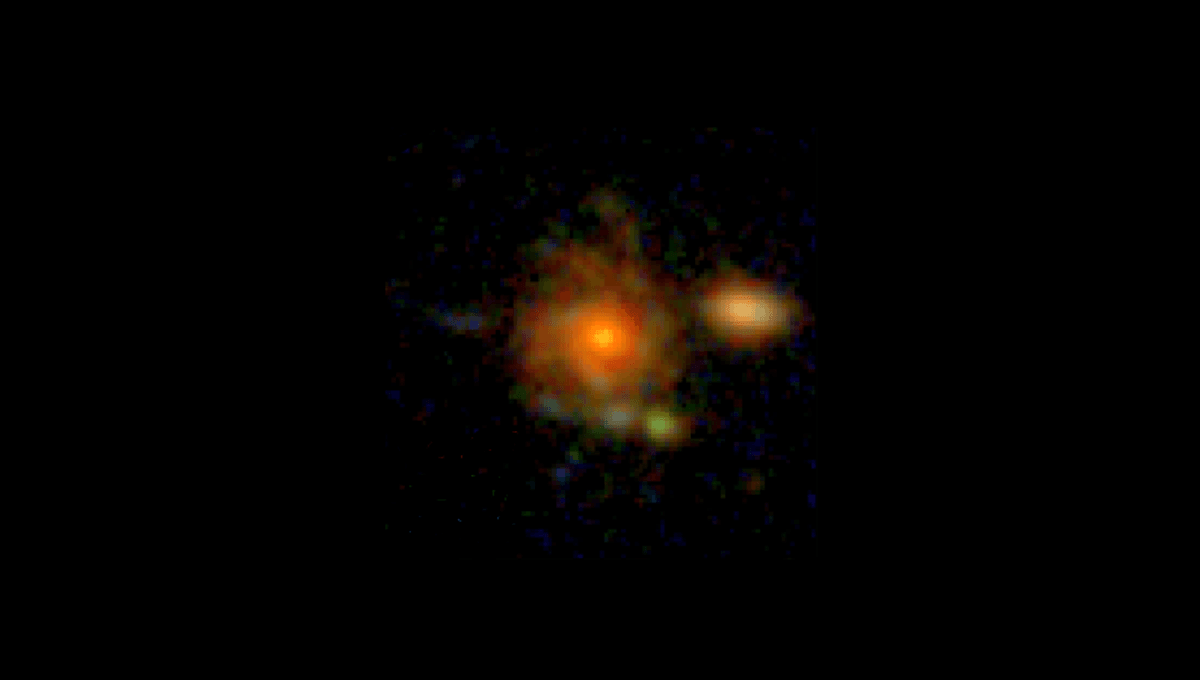
It has been just over three years since JWST was launched into space and in that time, the telescope has dramatically expanded our understanding of the distant universe. Among the important findings is the discovery of very young galaxies that already looked like their more senior counterparts in the local universe, and a recent study has shown a spiral galaxy that already had everything modern ones do just 1.13 billion years after the Big Bang.
The galaxy has been nicknamed Zhúlóng, which means “Torch Dragon”. It is a spiral galaxy like our own, the Milky Way. Zhúlóng also shows a clear division between its central concentration of stars, known as the bulge, and the disk where the spiral arms are located. As reported in a yet-to-be peer-reviewed paper, this is the most distant galaxy with a bulge, disk, and spiral arms known to date.
The bulge is believed to form first and for that reason, it has the older stars. Over time, the disk grows and the spiral arms form creating what we recognize and classify as a spiral galaxy. The observations of Zhúlóng show a clear distinction between the bulge and the disk – but that’s not all. The galaxy is also massive, weighing around 100 billion times our Sun (roughly what the Milky Way weighs today) having had over 13 billion years to grow.
With this discovery, JWST demonstrates that the process of formation and evolution of spiral galaxies can happen in as little as a billion years, even though it likely took many other galaxies billions of years to get as big and with a morphology like the more modern spiral galaxies. Zhúlóng is forming stars at an impressive rate, much more prolific than our own galaxy. However, compared to similar massive galaxies at that time, it is pretty quiet.
Galaxies also grow through collisions with small and big galaxies. These mergers were a lot more common back in the past when the universe was denser. Still, it does not seem like the galaxy is undergoing anything like that now. If it had had mergers, the events would have been much quicker than they are today, leading to very efficient growth.
“How a morphologically mature galaxy that resembles nearby massive spirals can form in this environment remains an open question, but the discovery of this source is a first step and provides an important constraint on galaxy formation models,” the authors wrote in the paper.
The existence of Zhúlóng adds to the growing evidence that the way galaxies are born and grow in the formative years of the cosmos is far from understood. Even among massive galaxies from the time, Zhúlóng stands out. Maybe there is more than one way to build a big galaxy, or maybe there are slow and fast ways to build spirals.
The team is planning to follow up with JWST and the Atacama Large Millimeter Array to understand this galaxy better, as well as to continue to discover more galaxy morphologies at these great distances from us.
The study has been posted to the preprint server arXiv and is yet to be peer-reviewed.
Source Link: The Most Distant Fully-Formed Spiral Galaxy Known Has Been Spotted By JWST